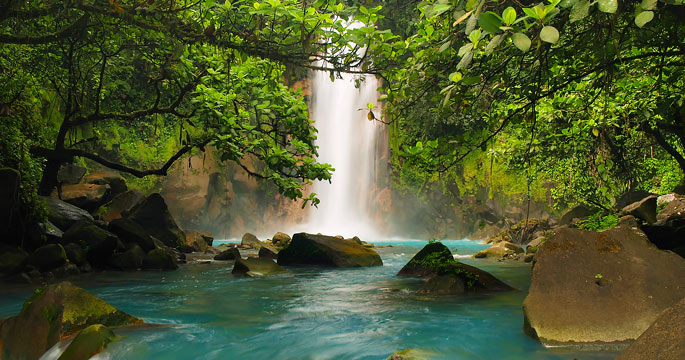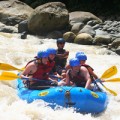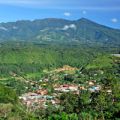From surf washed beaches to mountain cloud forests, Costa Rica packs a lot of adventures into a compact country. You can snorkel a reef in the morning, climb a volcano that afternoon, and then dance to Cumbia rhythms that night. It’s also one of the friendliest and safest countries in the world. If you still need a reason to pack your bags, here are ten more.
1 Ring Of Fire
Volcanoes are one of Costa Rica’s big attractions, as a number of national parks lie within the Pacific Ring Of Fire. The country is laced with mountain ranges that offer fascinating hikes to dormant volcanoes, plus hot springs and hidden crater lakes. Today’s popular and active cones include mile-high Arenal, which was active as recently as 2010. Poás Volcano National Park is just an hour away from San José, making it a popular option for day- trippers. It’s also the country’s largest and most active volcano. The highest is Irazú, which rises from the central highlands to a height of 1,259 feet.
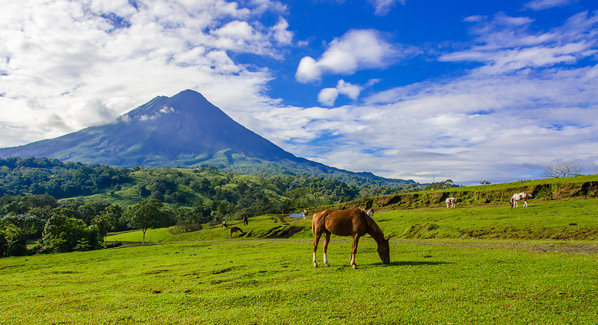
Horses graze in the shadow of Costa Rica’s Arenal volcano. Although currently in a resting phase, mile-high Arenal remains the country’s most active volcano. Photo: Simon Dannhauer/iStock
2 Turtle Watch
All of the world’s five species of sea turtles visit Costa Rica, and at least one group or another are laying eggs on Atlantic or Pacific beaches every month of the year. This means that visitors have a chance to see hatchlings emerging at almost any time. Some species spend their lives far out to sea, and move ashore only to nest. Others are commonly seen by swimmers and snorkelers. The Caribbean is active July to October, with green, loggerhead and hawksbill turtles. Leatherbacks come to shore from February to April. On the Pacific shore the greens and Olive Ridleys nest year- round, and favor Guanacaste’s Ostinal National Wildlife Refuge.
3 Adrenaline Junkies
Outdoor adventures play a key role in many Costa Rica vacations. Canopy tours include high-flying zip lining excursions that carry riders through forest canopies from platform to platform. There are even night zip line tours. More sedate are hanging bridges and aerial trams that allow more time to soak in the natural habitats. Other varieties of adrenaline-fueled outdoor activities include white water rafting, river and sea kayaking and mountain biking.
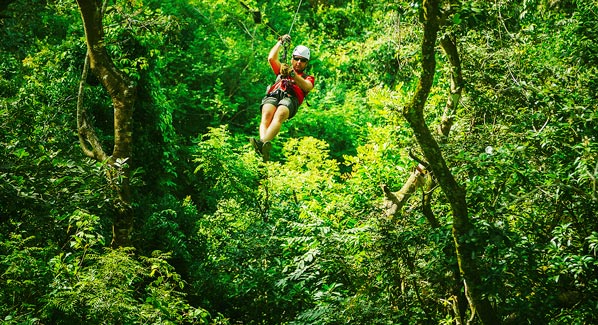
Costa Rica was among the first countries to offer canopy tours and zip line adventures. Today, there are dozens of locations around the country where riders can take flight. Photo: iStock
4 Caribbean Culture
The country’s 125-mile eastern shore is a place of exotic nature preserves and uncrowded beaches. The province of Limón is the wettest and lushest region of the country, receiving rainfall almost year round. There are lush jungles to explore, a living coral reef that attracts divers and snorkelers and plenty of black and white sands to discover. The area is culturally diverse, with a mix of Afro-Caribbean, Ticos and foreign cultures that mesh together with a Caribbean island vibe.
5 Surf Central
Known as a surfing mecca, Costa Rica is home to a growing number of surf-centric resorts, schools and camps. Both the Caribbean and Pacific coasts have good breaks. On the eastern coast, the waves are less predictable but often much larger when they roll in, as they are produced when there are tropical storms off the coast of Mexico. The season is short and hard-core experts usually head to Puerto Viejo. On the Pacific side the surfing sites are numerous and more predictable. On the southern Pacific coast the popular break is at Dominical Beach. The central coast has Playa Escondido and Hermosa and on the northern coast surfers head to Playa Naranjo and Playa Grande.
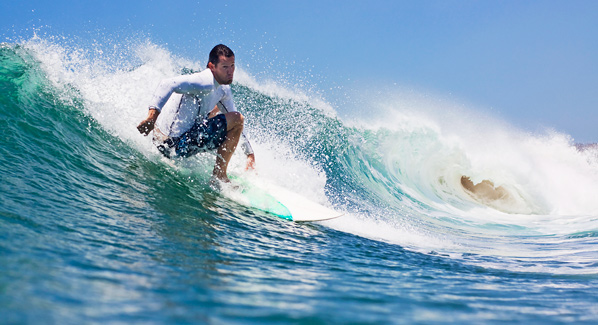
Costa Rica is considered a surfer’s paradise. Photo: iStock
6 Pacific Coast
Surfers, sunsets and sand are the big attractions on the west coast. The climate is dryer and a bit cooler than the Atlantic coast, and the area boasts more sunny days than anywhere else in the country. Surfers come for perfect waves at Tamarindo, Nosara and Dominical, fishermen and divers head for coastal islands where fish school, and an international crowd of sun worshipers flock to beach towns and resorts near the Gulf of Papagallo.
7 Animal Kingdom
Home to an array of weird and interesting animals, Costa Rica’s rain forests and natural preserves provide a habitat for some of the worlds most exotic creatures. There are four varieties of monkey, including the capuchin (white faced) spider, squirrel and the noisy and rowdy howler monkey. The two- and three-toed sloths make their home in the tree canopy and the coatimundi, a cross between a raccoon with a tail that is used like a monkey’s tail are common sightings as are the leafcutter ants that are seen marching along the ground.
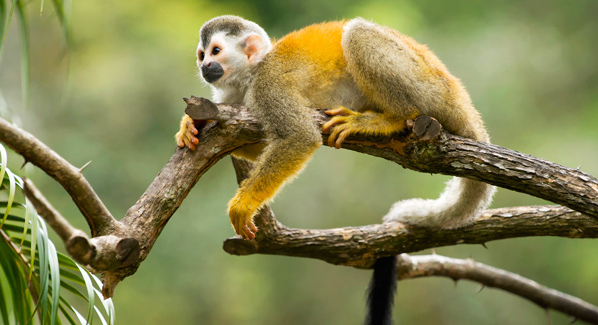
A squirrel monkey perches on a branch in a Costa Rica rain forest. The animal’s long tail is not used for climbing, but rather for balance as it runs from branch to branch. Photo: iStock
8 Ticos
Warm and friendly, the people known as Ticos have reason to be happy. Decades ago, the country dismantled their military and focused government funds on education and health care. The country leads the world in literacy and environment protection, producing 99 percent of its electricity from renewable sources. According to the Happy Planet Index, they are among the most contented people in the world, and those living on the Nicoya peninsular are among those who live the longest.
9 Beaches
There are almost 300 beaches and 750 miles of shoreline along the country’s two coasts. Sand colors vary from white to brown and black while the beach of Playa Conchal is almost pink, as it is formed from conch shells. Some areas are known for deserted stretches of beaches that are far from civilization, while others are busy tourist hubs flanked by resorts, cafes and beach clubs. White sands are found at Uva and Manzanillo and waves attract surfers at Jaco and Hermosa.
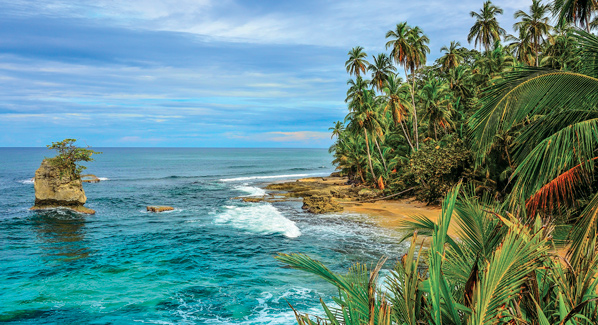
A deserted beach on Costa Rica’s central Caribbean coast. This sparsely settled region is popular with adventure travelers, surfers and divers. Photo: Simon Dannhauer/iStock
10 Biodiversity
Between it’s opposing coastlines and mountainous interior, Costa Rica nurtures one of the world’s highest levels of biodiversity. And this natural bounty is well protected. With 20 natural parks, 8 biological reserves and a growing number of private reserves, Costa Rica maintains 25 percent of its total land in a protected and natural state. The 500,000 species that make their home there continue to thrive.

